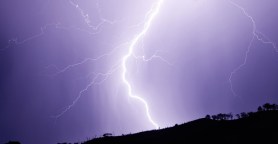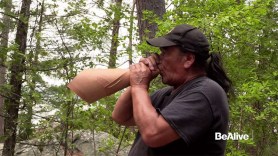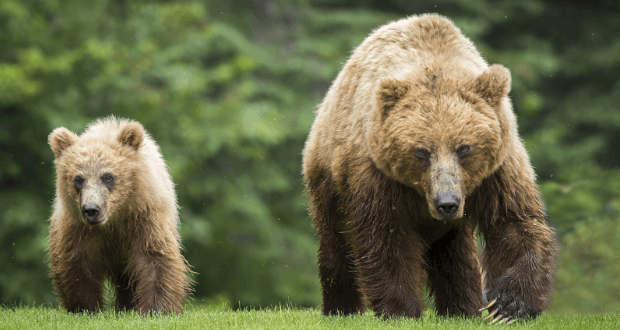

Whether you’re hiking in the swamps of Florida, the hills of the Northeast, the mountains and deserts of the West, or the cold tundra of Alaska, you may encounter one of the dangerous animals in North America. And while everyone loves the joy of spotting a squirrel or the awe of encountering a bull elk, some other animal encounters are less pleasant.
Videos by Outdoors with Bear Grylls
Today, we’re going to look at the 5 most dangerous animals in North America, and what you can do to come out alive from any interaction.
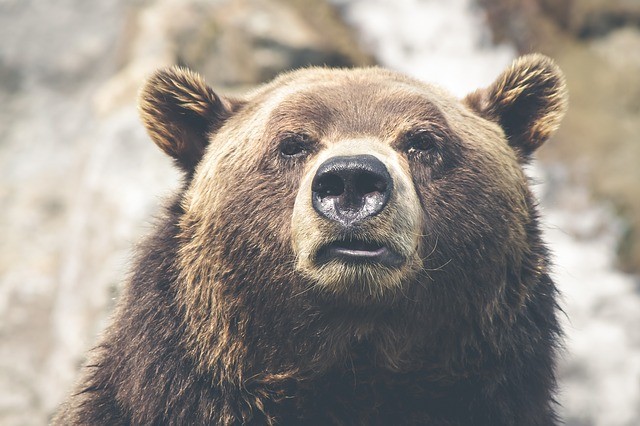
Bears
There are three main types of bears in North America: black bears, brown bears, and polar bears. Let’s take a separate look at each of them.
Black Bears
Black bears rarely interact with humans. They prefer to stay well hidden, and can generally be seen running away – if you ever see them at all.
However, sometimes a starving bear gets desperate, and decides to try adding human to its menu. In that case, you’ll see them quickly bearing down on you without any hesitation. In this case, you can forget about running. The bear is faster than you. Your best bet is to yell, throw rocks, and fight if necessary.
Alternatively, you can invest in a can of bear spray, and keep it with you in the woods.
Brown Bears
Brown bears – often called grizzlies – don’t kill people for food. However, they’re territorial and protective. As a result, appropriate behavior in a grizzly bear encounter is very different from how you should treat a brown bear.
If a grizzly is coming towards you, back away slowly, but keep moving until the bear is out of sight. If the bear comes close enough to reach you, playing dead is your best bet. The bear will see you as no longer being a threat, and should leave you alone.
Needless to say, bear spray is also a less terrifying solution in this scenario.
Polar Bears
There are only two things in a polar bear’s frozen world: ice and food. And you’re not ice. We hope you have bear spray or a large caliber gun. There’s no other way to survive an encounter with these apex predators.
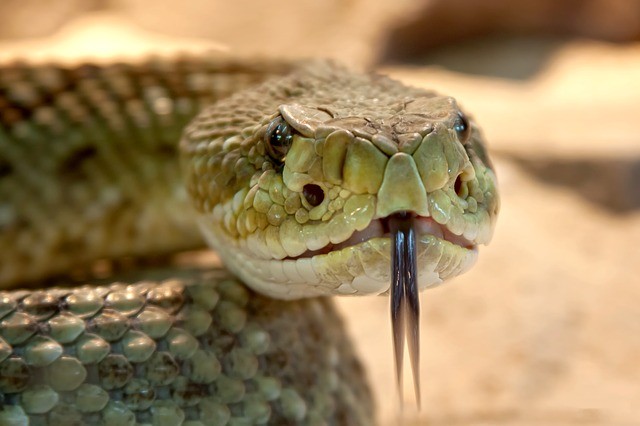
Snakes
We’ll look at two dangerous types of snakes today: rattlesnakes and cottonmouths.
Rattlesnakes
Rattlesnakes are deadly vipers that come with a built-in warning system: their namesake rattle, which they shake when threatened. The good news with these snakes is that we’re not on their menu, so the only time they typically bite is when they’re threatened.
Adult rattlers will generally give a warning bite to humans, saving their precious venom for prey. Juveniles, on the other hand, can’t control their venom output, and will deliver the same amount as several adult bites. Either way, get to a hospital immediately, or your life may be in danger.
Cottonmouths
Cottonmouths, like rattlers, only strike when threatened. However, they live near water, which means you’re just as likely to encounter them in bare feet or sandals as you are with a heavy hiking boot. If you accidentally step on one, you will get bitten.
Unlike rattlers, cottonmouths don’t have a warning rattle, although they do occasionally hiss. Keep an eye out for their brown and gold diamond pattern, and you’ll be fine. If you want more tips on staying safe in snake country, check out our article on snake awareness.
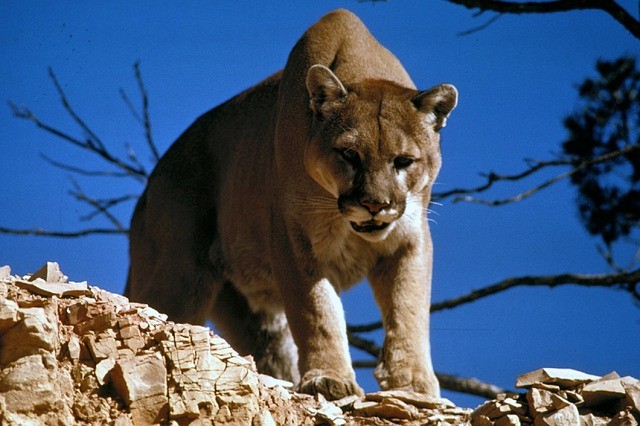
Cougars
Like black bears, cougars are generally shy around humans, and prefer to keep out of our way whenever possible. Also like black bears, they sometimes decide to eat us if they’re starving and desperate. If you’re in cougar country, keep your eyes peeled; they’re ambush predators, and they’re liable to spring out on you from behind a rock or a bush.
In the event of a cougar encounter, hold your ground. Wave your arms, yell, throw things, and fight if necessary. Running will only trigger the big cat’s predator instinct, making it even more likely to chase.

Wolves
Wolves are pack hunters, and are generally content to avoid humans. They prefer deer, elk, and other large mammals.
However, wolves are susceptible to the same diseases as domestic dogs, which means you may encounter one that’s gone rabid. Give any suspicious a wolf a wide berth. If you’re bitten, get to a hospital as soon as possible. Not only is the wolf potentially rabid, it may be carrying other diseases that could lead to an infection.
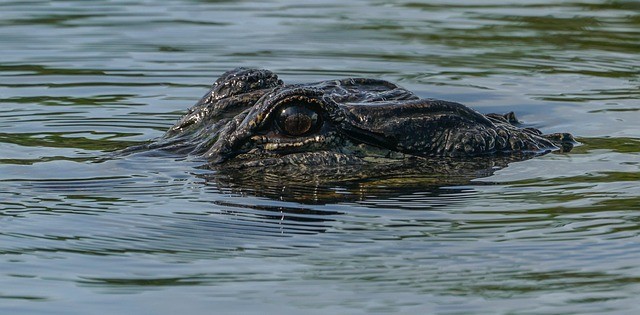
Alligators
Most alligator attacks on humans occur where alligators hunt: in the water. Since you’re no match for a gator, our best advice for dealing with these fearsome reptiles is to stay out of rivers, lakes, and ponds which are part of the alligator’s habitat.
While gators won’t typically attack people on land, don’t get complacent around them. They can move quickly when provoked, and they don’t like being teased. If you see one sunning itself, feel free to snap some pictures, but keep your distance all the same.



